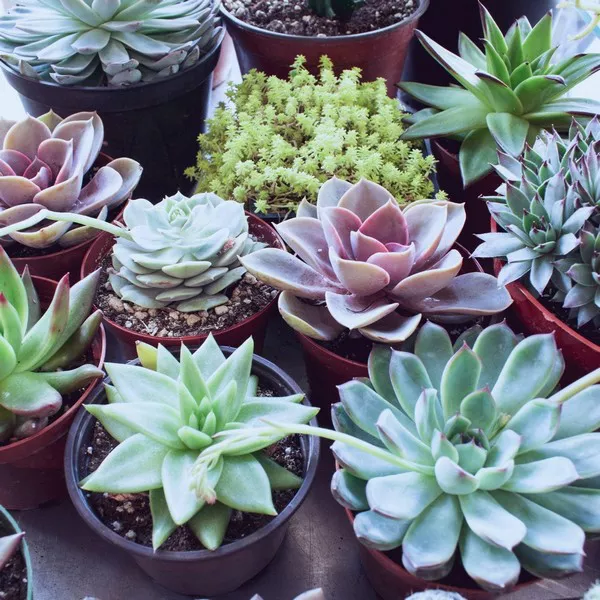Succulents, with their unique shapes and vibrant colors, are cherished by plant enthusiasts around the world. However, sometimes succulents may exhibit elongated or stretched stems, compromising their compact and aesthetically pleasing appearance. Understanding the causes of long stems in succulents is crucial for troubleshooting and taking appropriate action. This article aims to provide a comprehensive guide to help you identify and address the factors contributing to elongated succulent stems.
The Significance of Compact Growth
Succulents are known for their naturally compact and symmetrical growth patterns. This compact growth allows them to store water efficiently and thrive in arid environments. However, when succulent stems become elongated, it can indicate underlying issues that need attention.
Insufficient Sunlight: Light Deprivation and Elongated Stems
One of the primary reasons for long stems in succulents is insufficient sunlight. Succulents are adapted to thrive in bright and direct sunlight, as they originate from regions with high light intensity. When succulents do not receive enough light, they exhibit a behavior called etiolation, where they stretch and elongate in their search for adequate light.
Insufficient sunlight can occur due to several reasons:
Indoor Growing: Succulents placed indoors may not receive sufficient light if they are positioned far from windows or in areas with limited natural light. Even though succulents can tolerate lower light conditions for a while, they may start stretching to reach the available light source.
Shaded Areas: Outdoor succulents that are positioned in shaded areas or under trees may not receive the full sun exposure they require. Partial shade or filtered light can be beneficial for some succulent species, but prolonged periods of inadequate sunlight can cause elongation.
Solutions for Light Deprivation:
To address the issue of insufficient sunlight and prevent elongation in succulent stems, consider the following solutions:
Provide More Light: Place succulents in areas where they receive bright, indirect light or direct sunlight for a minimum of six hours per day. Position them near windows or consider using grow lights to supplement natural light if indoor conditions are not sufficient.
Rotate Succulents: Rotate succulents regularly to ensure even light exposure on all sides. This prevents them from leaning or growing unevenly towards the light source.
Gradual Acclimation: If succulents have been growing in low light conditions for an extended period, gradually acclimate them to brighter light. Sudden exposure to intense sunlight can shock the plants. Start by gradually increasing their light exposure over a few weeks to allow them to adjust.
Improper Watering Practices: Overwatering and Succulent Stem Elongation
Overwatering is another common cause of elongated succulent stems. Succulents have evolved to store water in their leaves, stems, or roots, allowing them to survive in arid environments. When succulents are overwatered, they receive more moisture than they need, which can lead to root rot and other problems.
When succulent roots are constantly in a moist environment, the plants may allocate more energy towards stem growth, resulting in elongation. The elongated stems are an adaptation to reach higher ground, where they are less likely to be submerged in excess water.
Solutions for Overwatering:
To address overwatering and prevent succulent stem elongation, follow these solutions:
Water Infrequently: Succulents prefer dry conditions and benefit from a “soak and dry” watering approach. Allow the soil to dry out completely between waterings. Water only when the soil is dry to the touch, and consider the specific water needs of each succulent species.
Ensure Well-Draining Soil: Use a well-draining soil mix formulated specifically for succulents or create your own by adding materials like perlite, coarse sand, or pumice to regular potting soil. Well-draining soil prevents water from accumulating around the roots, reducing the risk of overwatering.
Choose Appropriate Containers: Ensure that the pots have drainage holes to allow excess water to escape. This prevents water from pooling at the bottom of the container, which can lead to overwatering.
Observe Signs of Thirst: Instead of relying on a strict watering schedule, observe the visual cues of your succulents. Water them when the leaves start to wrinkle or shrivel slightly, indicating the need for moisture.
Insufficient Air Circulation: Poor Airflow and Elongated Succulent Stems
Succulents thrive in environments with good air circulation. When airflow is limited or stagnant, succulents may exhibit elongated stems. Poor airflow can be caused by various factors:
Crowded Arrangements: Succulents planted too closely together can obstruct airflow, leading to high humidity levels around the plants. This can result in elongated stems as succulents stretch to reach more favorable conditions.
Enclosed Spaces: Succulents kept in enclosed spaces, such as terrariums or glass containers, may experience reduced airflow. While enclosed environments can be suitable for some succulent species, prolonged confinement can contribute to elongation.
Solutions for Insufficient Air Circulation:
To address the issue of insufficient air circulation and prevent elongated succulent stems, consider the following solutions:
Proper Spacing: When arranging succulents, ensure there is enough space between each plant to allow for adequate airflow. This helps maintain optimal humidity levels and prevents elongation caused by high humidity.
Avoid Overcrowding: If succulents have already grown elongated stems due to overcrowding, consider replanting them in a more spacious arrangement, allowing them to regain their compact form.
Terrarium Adjustments: If growing succulents in a terrarium, ensure proper ventilation by partially opening the lid or removing it for short periods regularly. This allows fresh air to circulate, reducing the risk of elongation.
Conclusion
Elongated stems in succulents are often indicative of underlying issues that need attention. By understanding the causes, such as insufficient sunlight, overwatering, or poor air circulation, you can troubleshoot and address these factors to restore the compact and aesthetically pleasing growth of your succulents. Provide adequate sunlight, practice proper watering techniques, ensure well-draining soil, and maintain appropriate air circulation to prevent elongation and promote healthy succulent growth. With the right care, your succulents will thrive and bring beauty to your indoor or outdoor space.


